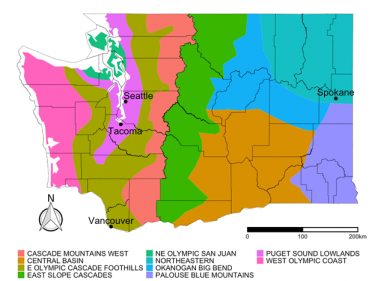
Heat-related deaths are an issue across Washington state, and they occur even in regions that typically have milder climates, according to a University of Washington study published Aug. 30 in the journal Atmosphere. This is the most extensive study yet of heat-related mortality in Washington state, and the first to look beyond the major population centers to include rural areas.
Statewide, the odds of dying were on average 8% higher in recent decades on days when the combination of temperature and humidity, known as the humidex, was in the top 1% of recorded values at that location, compared to a day with a mid-range value for humidex.
“This study shows that heat-related mortality, even in a temperate area like Washington state, is a current environmental public health problem,” said lead author Logan Arnold, who did the work as a UW master’s student in quantitative ecology and resource management. “It’s not a future public health problem that will exist in a warming climate — it’s something that we are already experiencing now.”
Although heat stroke is sometimes listed as the official cause of death, other conditions exacerbated by heat are often the immediate focus. Researchers used statistical methods to uncover “hidden” deaths that may have listed something else, like illness or a chronic disease, as the primary cause.
“This research adds to existing evidence that the burden of heat-health impacts resides in the effect on underlying health conditions,” said senior author Tania Busch Isaksen, a UW associate teaching professor in environmental and occupational health sciences and co-director for the UW’s Collaborative on Extreme Event Resilience. “For example, we see an increase in diabetic and cardiovascular-related mortality associated with extreme heat days. Physiologically it is harder for people with underlying health conditions to thermoregulate, but it is also likely that medications play a role in the body’s ability to dissipate heat.”
The study analyzed deaths from 1980 to 2018 recorded by the Washington State Department of Health. The authors included only non-traumatic deaths in the months of May through September and separated them into 10 federally defined climatic zones. Exposure to heat on the day of death was determined based on home address and the humidex on that date.
Results support what previous studies in King County have shown: Heat does lead to more deaths, even in places with milder climates.
Read more at UW News »
